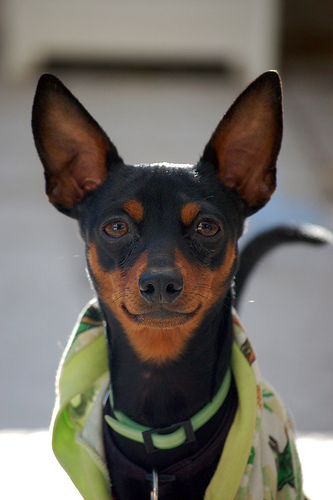
The least tiresome way to get from Point A to Point B is with an efficient stride forward, but some dogs expend as much energy moving up and down as they do propelling themselves to where they want to go. Every time such a dog lifts and lowers his leg, he creates an arc of travel, but too much arc leads to inefficient movement that’s fatiguing to the dog and reduces his endurance. Needless to day, this means the dog can’t run, play, or work as long as a dog with a sounder gait. Dog fanciers borrowed the name for this motion from the horse world where this motion was cultivated in the Hackney horse. There, an exaggerated high knee and hock action courtesy of flexible joints was popular for showing in harness events and as carriage horses.
In most breeds, a hackney gait is a serious fault because a dog’s forelegs action is usually carried out to keep their paws out of the way from the back feet and wastes energy. In the Miniature Pinscher, however, the hackney gait is called for in the breed standard and is mentioned no fewer than three different times. This hackney gait is not the same as the horse’s hackney gait because it’s limited to the front legs only. A Min Pin lifts his front feet up and out with a bend at the wrist, but the dog is still driving from behind and should still move forward with a minimum amount of effort. In no way should a Min Pin have a mincy, inefficient gait with no rear drive.
This unique gait underscores the proud carriage of a proud breed where a high-stepping trot enhances the “King of Toys” reputation. With its clean outline, a lightly arched and gracefully curved neck, and high tail set, the Min Pin’s gait exudes the “fearless animation, complete self-possession, and spirited presence” addressed in the standard. See if you don’t agree as you watch the Best of Breed winner from the 2009 Westminster Kennel Club Dog Show (the dog handled by the exhibitor in red):
Image:photo credit: Lys* 2/365 via photopin (license)
